Free Influencer Marketing Series
Success! Enjoy the series! Part 1: How an agency took a brand from 0 to $1MM in 4 months using influencers & ads
Free Influencer Marketing Series
Success! Enjoy the series! Part 1: How an agency took a brand from 0 to $1MM in 4 months using influencers & ads

Whether you work with five influencers or a thousand, keeping track of content and communications gets messy once an influencer marketing campaign is live. But the chaos starts well before the launch—from influencer discovery to outreach and contracts to briefs.
This is where influencer relationship management tools can help.
Influencer management is the process of handling influencer relationships, including relationship building, contracting, briefing, content approvals, campaign performance tracking, feedback, and more.
How many times have you had an influencer not follow the brief? Or have confusion around payment terms? Worse, how often does your best-performing influencer pause the partnership?
You can have the perfect influencer marketing strategy with star influencers who align with your values and brand goals. But if you don't establish a good relationship with them, the results won’t live up to your expectations.
Influencer management increases the likelihood of a good outcome by giving structure to important processes, so you can count on:
Influencer marketing is influencer relationship building at its core. Influencers don’t want to be treated as a small cog in your marketing machine. They need personal attention and regular communication, just like your customers.
The problem isn’t building a relationship, but building relationships with hundreds of influencers. How do you make each one feel great about the working relationship?
This is where an influencer management tool helps you. Whether you use a spreadsheet or a tool like MightyScout, the goal is to keep track of all your influencer communications.
Have you ever forgotten to send a product sample to an influencer? Or maybe you’ve lost track of who’s posted about your brand and who hasn’t?
You’re not alone: Managing influencers and keeping track of them isn’t easy.
Influencer management helps you avoid this disorganization. You need a system to keep track of the sent samples, the shared content, the results from each social media influencer, affiliate links conversions, and more. Without an influencer relationship management system, the campaign might fall apart.

Not all your influencers deliver the same result—some will be better than others. Failing to identify such opportunities can result in lost sales and engagement. When one influencer identifies a strategy that works, how do you communicate it broadly to help your other influencers perform better?
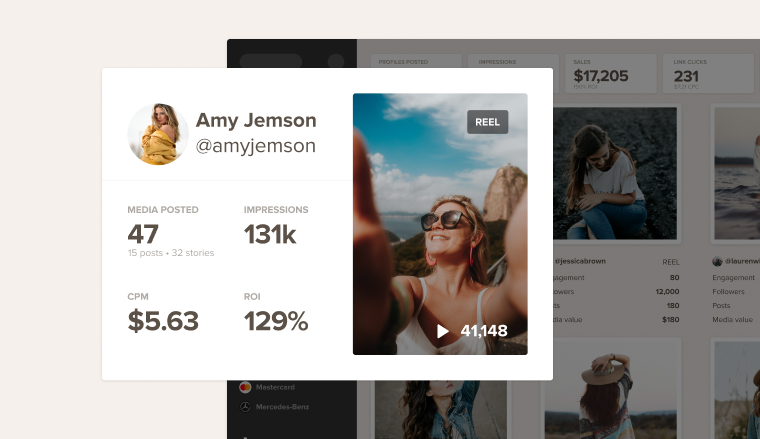
How can you incentivize the top performers to keep performing? How can you help the newer ones improve their results?
And how do those individual efforts roll up to overall results? Can you justify your efforts and budget to your higher ups? What do your reports look like? Here’s how MightyScout can help you attribute sales to your influencer marketing efforts:
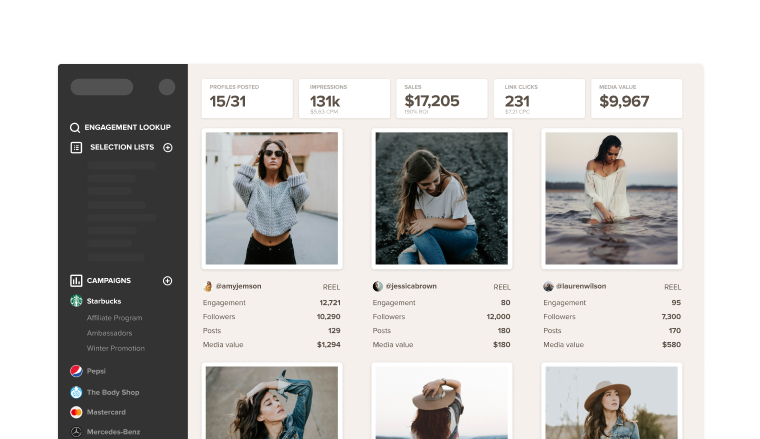
UTM links and unique code tracking give you only so much insight. Influencer marketing campaigns need key performance indicators (KPIs). How do you ensure the right data is collected, metrics calculated, and displayed in a dashboard to help you make business decisions? Otherwise, the data are just numbers on a spreadsheet. Influencer management includes tracking the results and making better decisions.
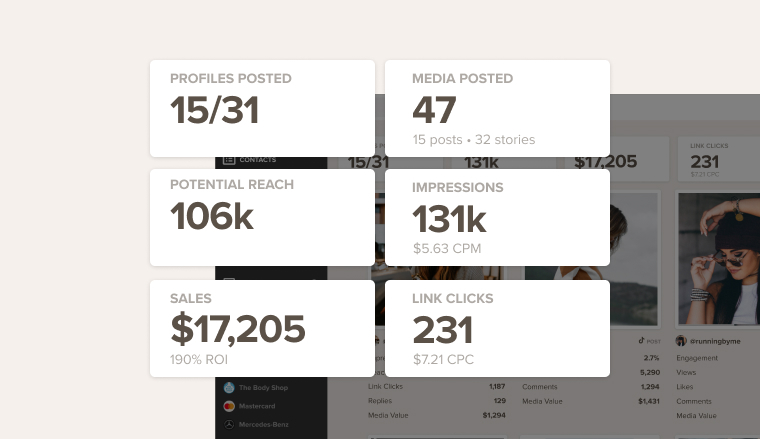
Managing an influencer campaign is a five-step process:
Influencer marketing is a means to an end—the end being your current business goals. So, break down your overall goals and align them with your influencer marketing campaigns. Those goals might be increasing brand awareness, driving sales, generating authentic content, or producing buzz around an upcoming sale.
Find good-fit influencers based on your goals, taking into account the factors that correlate to the results you desire. For example, if your goal is to increase sales, prioritize influencers with a track record of driving conversions through their content. Or if your goal is to raise awareness about a new product, choose influencers known for their educational content and an engaged audience.
Once you have a list of influencers, its time to reach out for a partnership and collaboration. This step will involve an outreach invitation and potentially a contract. If you need more details and a template on what goes into an influencer contract, we've got you covered.
Delaney Spetnagel, Head of Social and Influencer Marketing at OURA, recommends a 15-minute onboarding call with each new influencer. This call starts the relationship on a strong note. It allows you to get to know the influencer as an individual and understand how they envision creating content for the brand.
The influencers’ social media content will be as good as your brief. Make sure you share your campaign goals and a clear direction to take, leaving space for creativity and ownership.
Check in with your influencers regularly—not just to keep an eye on how the campaign is going, but to get feedback on the partnership. This can be tricky if you’re juggling hundreds or thousands of influencers at once, which is where an influencer management platform comes into play. An influencer management tool can help you organize your processes to:
Remember important dates (like influencers' birthdays)
Know if it's time to reach out to an influencer with a personal message
Note the influencers content preferences and strengths
Know when an influencer has shared content so that you can engage with the content
With an organized management system, you’ll be able to strengthen relationships by segmenting your partners, and sending them a personalized message based on their lifecycle stage with you. New influencer affiliates appreciate product education, gamified goals and rewards to keep them motivated, and examples of content that are working for others. An influencer affiliate who hasn’t posted in a while may need a warm message with a little incentive to get them back on track. And your highest LTV partners will appreciate some public recognition in your influencer community.
Mandy McDonald, Senior Director of Influencer & Creator Partnerships at AG1, compares influencer marketing to relationship marketing. Influencer relationships, like any relationship, take time to nurture and build. McDonald noted AG1's well-known relationship with Andrew Huberman began after Huberman had been a customer for 10 years.
Pharos, an influencer marketing agency, offers three tips for building long-term relationships: regular communication, even during inactive campaign periods, celebrating personal and professional milestones of influencers, and transitioning from one-off projects to long-term collaborations or ambassadorships.
Once the influencer marketing campaign is live, track the clicks, engagement, and target audience response. Make sure you also track the difference in results as the content format changes to figure out the best content types for your brand.

Your team can end up spending hours every week on tedious tasks that can easily be automated. An influencer management tool helps free up time so you can focus on tasks that move the needle—like having real conversations with your influencers.
An influencer management tool allows you to work with more influencers and, as a result, get more exposure and content for your brand. Here’s a checklist you can follow when selecting an influencer management tool:
Communication is the most time-consuming—yet most important—aspect of influencer management. Some influencers prefer email outreach, while some prefer a direct message on social media platforms. This gets complicated when you onboard each influencer and the conversations are in silos. Make sure the tool integrates with your communication apps and brings all your messages into one place.
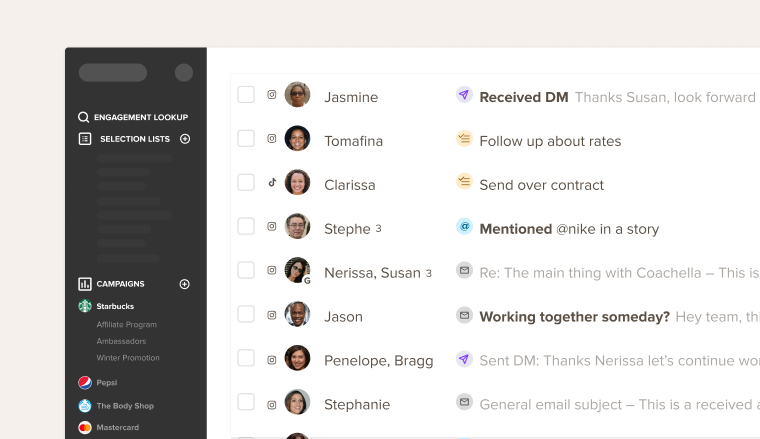
Scattered data is difficult to analyze. A single dashboard with all the influencer profiles, current status of partnership, and campaign performance metrics can change how you view data.

The amount of data from your marketing campaigns can be overwhelming. There are often multiple links, affiliate codes, and other KPIs. While your team can keep track of each separately, human error happens, and it’s easy to miss an important piece of information.
Outreach, follow-ups, contracts, payments, tracking—many repetitive tasks can be automated to free up your time. A good influencer relationship management (IRM) tool can take the pressure off your team through powerful automation workflows, striking the fine balance between automation and relationship-building.
You don’t want to sign a one-year contract for a tool you won’t need in a few months. Influencer campaigns are time-bound and not necessarily yearly, so look for a tool that offers flexible payments based on how many campaigns you run or how many influencers you work with.
As is evident from the number of tasks required for a successful influencer campaign, it’s tedious and time-consuming for your team to spend hundreds of hours copy-pasting spreadsheet details. Even the most diligent manual tracking can see some tasks slip through the cracks, which can impact your entire campaign and reporting.
Leveraging an influencer marketing platform (also called influencer CRM) gives you multiple hours back, which you can spend on big-picture tasks.
This is where the best influencer management platform, MightyScout, comes in, helping to automate the repetitive tasks that aren't a part of relationship-building.
Here’s how MightyScout can help you manage your influencer campaigns:
Most influencer management tools track only paid influencer campaigns. The problem is, that relationship-building doesn’t happen with a one-off pay-for-post campaign. There’s a warm-up time for most influencers, which includes product seeding and product gifting.
Ali Applebaum, an influencer marketing strategist, formerly of Tonal, shares that product gifting was a big focus for initiating relationships for the Tonal brand. Fortunately, Tonal's outreach was very well received by influencers: 98% of influencers were willing to accept the product gift.
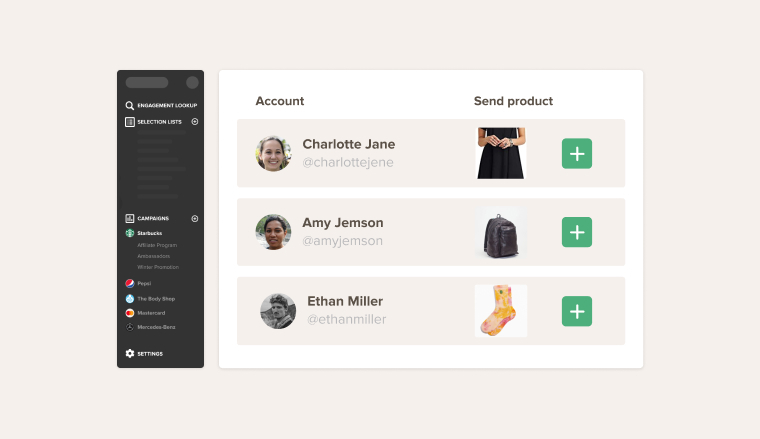
Whenever you send a free product sample to an influencer, there’s a chance they might post about you and your brand. MightyScout tracks every kind of campaign—be it pay-for-post or a free product gift.
Learn how to implement an unpaid influencer strategy here.
The bottleneck for a lot of marketers doing influencer marketing is finding the right influencers. With MightyScout, your best influencers are only a click away. The look alikes feature takes a handful of your favorite influencers and produces a list of similar influencers based on the stats and profiles.
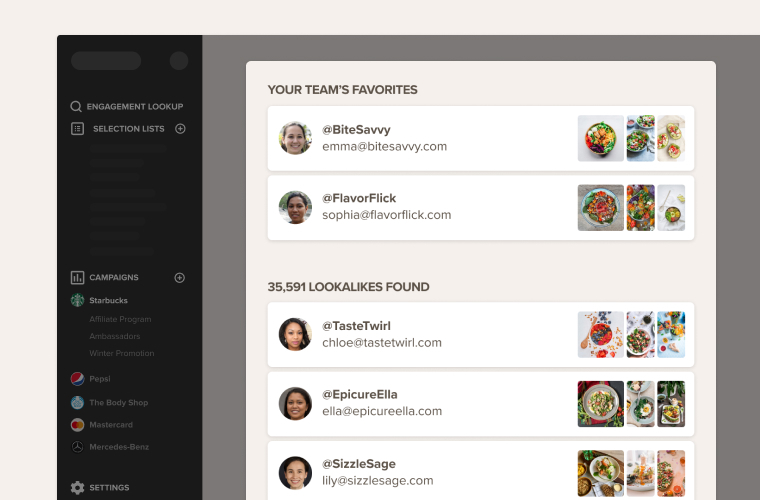
An influencer marketing agency often has to create multiple accounts for different clients. With MightyScout, you can manage all your clients in one place.
Imagine this: You have a great roaster of influencers and approved content, and now the campaign is live. You need to track who posted what and when, the conversion rate, the engagement rate, and UTM links, and align them with your KPIs. It’s a lot of work.
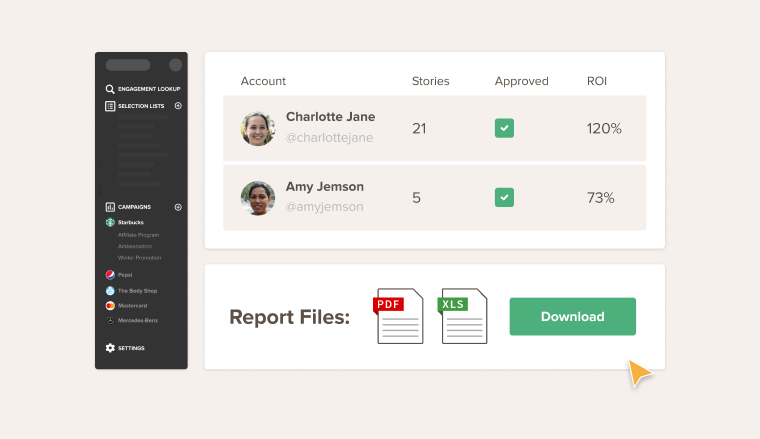
MightyScout automates this tedious task for you. All you need to do is download your report, which contains all of your KPIs in an easy-to-read format.
An influencer management platform is software that helps you manage your influencer campaigns and relationships in a centralized place. It simplifies everything from tracking campaign performance to managing communications and relationships, and automating workflows.
If your decision is guided by a tight budget, make sure the tool you choose lets you scale as your brand gets bigger. A lot of platforms can’t handle the increase from a handful of influencers to a hundred. Use our checklist above to make the right decision for your brand and campaigns.
Influencer relationship building is a long and slow process. The biggest problem is not having enough time to focus on relationship-building because you’re spending hours bogged down in repetitive tasks that can be automated.
The right tools give influencer managers and teams the best leverage: time and headspace to focus on influencer marketing strategies and business decisions.
With MightyScout, you can manage influencers without getting overwhelmed, and let the tool do the heavy lifting. Book a demo today to see how.

Join hundreds of organizations who use MightyScout everyday with our 14-Day Trial. No credit card needed.